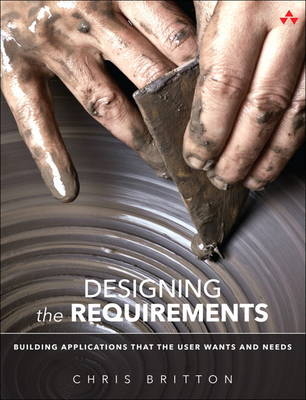
Designing the Requirements
Addison-Wesley Educational Publishers Inc (Verlag)
978-0-13-402121-8 (ISBN)
- Titel ist leider vergriffen;
keine Neuauflage - Artikel merken
Britton offers powerful techniques for understanding stakeholders’ concerns and working with stakeholders to get the requirements right. Using Britton’s context-driven approach to requirements design, you can detect inconsistencies, incompleteness, poor usability, and misalignment with business goals upstream—long before developers start coding. You can also design outward-looking applications and services that will integrate more effectively in a coherent IT architecture.
First, Britton explains what requirements design really means and presents a hierarchy of designs that move step by step from requirements through implementation. Next, he demonstrates how to build on requirements processes you already use and how to overcome their serious limitations in large-scale development. Then, he walks you through designing your application’s relationship with the business, users, data, and other software to ensure superior usability, security, and maximum scalability and resilience.
Whether you’re a software designer, architect, project manager, or programmer, Designing the Requirements will help you design software that works—for users, IT, and the entire business.
Coverage includes
Designing the entire business solution, not just its software component
Using engineering-style design analysis to find flaws before implementation
Designing services, and splitting large development efforts into smaller, more manageable projects
Planning logical user interfaces that lead to superior user experiences
Designing databases and data access to reflect the meaning of your data
Building application frameworks that simplify life for programmers and project managers
Setting reasonable and achievable goals for performance, availability, and security
Designing for security at all levels, from strategy to code
Identifying new opportunities created by context-driven design
Chris Britton is a long-time IT professional. For the last five years he has–rather to his surprise–found himself designing and implementing web applications for business startups. Prior to that, he worked as a consultant, mainly in IT architecture and application development. Before that, for many years he worked for Unisys where did a variety of jobs–system software design; architecture consultancy; fixing large, broken databases; program management; and even marketing. It was while at Unisys he wrote his first IT book IT Architecture and Middleware: Strategies for Builiding Large Integrated Systems.
Preface xiii
Acknowledgments xxi
About the Author xxiii
Chapter 1: Introduction to Context-Driven Design 1
Designing Requirements 2
What Is Design? 9
Making IT Application Development More of an Engineering Discipline 19
Taking IT Architecture into Account 20
Concluding Remarks 21
Chapter 2: A Hierarchy of Designs 23
Justifying the Hierarchy of Designs 23
Context Design 28
Integration Design 35
Technical Design 41
User Interface Design 44
Database Design 46
Implementation 47
Is It Really Engineering? 48
Concluding Remarks 51
Chapter 3: Reusing Existing Methods and Practices 53
Agile 54
Upside-Down Design 60
Use Cases 62
The Problem with Estimating Cost 68
Why Is BDUF Big? 72
Iterations 74
Quality 75
Testing and Inspection 76
Using Existing Practices in Context-Driven Design 78
Learning Organizations 80
Concluding Remarks 80
Chapter 4: The Problem of Large Applications 83
The Dimensions of Size 84
Problems with Large Projects 88
Can Large Projects Be Avoided? 100
Concluding Remarks 103
Chapter 5: The Relationship with the Business 105
Understanding Business Processes 106
When It’s Not a Process 112
The Need for a Wider View 115
Applying the Business Strategy to Application Development 118
Analysis 123
Concluding Remarks 128
Chapter 6: The Relationship with the Users 129
Adding the Detail 129
Who Are the Users? 141
Analyzing the Context Design 151
Reviewing the Context Design 156
Concluding Remarks 158
Chapter 7: The Relationship to Other IT Projects 159
Integration Design 161
Services Interface Design 170
Existing Applications 178
Looking Back at the Design Process 186
Concluding Remarks 188
Chapter 8: User Interface Design and Ease of Use 189
Logical User Interfaces 191
From Tasks to Clicks 194
Ease of Use 199
Transaction and Task Integrity 208
The User Interface Design and the Other Detailed Designs 212
Concluding Remarks 212
Chapter 9: Database Design 215
Database Design 215
Database Design Theory 223
Programmers versus the Database Designer 233
Database Access Services 236
NoSQL 238
Concluding Remarks 242
Chapter 10: Technical Design—Principles 243
Principles of High Performance on a Single Machine 244
Principles of High Performance on Many Servers 252
Principles of High Resiliency 260
The Need for Testing and Benchmarking 263
The Technical Design Process 265
Concluding Remarks 268
Chapter 11: Technical Design—Structure 271
Program Structure 272
What Is a Framework? 276
The Variety of Programming Languages 281
Choosing a Programming Language and Framework 286
Extending the Framework 290
Implementing Common Functionality 293
Concluding Remarks 295
Chapter 12: Security Design 297
IT Application Security Principles 299
The Security Elements of Each Design 307
Security Programming 316
Concluding Remarks 319
Chapter 13: The Future of Application Development 323
How Context-Driven Design Changes Application Development 323
Context-Driven Design Opportunities 325
The Application Development Challenges 332
Concluding Remarks 339
Appendix A: Context Design Checklist 341
Description 341
References 349
Index 353
| Verlagsort | New Jersey |
|---|---|
| Sprache | englisch |
| Maße | 179 x 232 mm |
| Gewicht | 622 g |
| Themenwelt | Mathematik / Informatik ► Informatik ► Software Entwicklung |
| Mathematik / Informatik ► Informatik ► Theorie / Studium | |
| ISBN-10 | 0-13-402121-5 / 0134021215 |
| ISBN-13 | 978-0-13-402121-8 / 9780134021218 |
| Zustand | Neuware |
| Haben Sie eine Frage zum Produkt? |
aus dem Bereich


